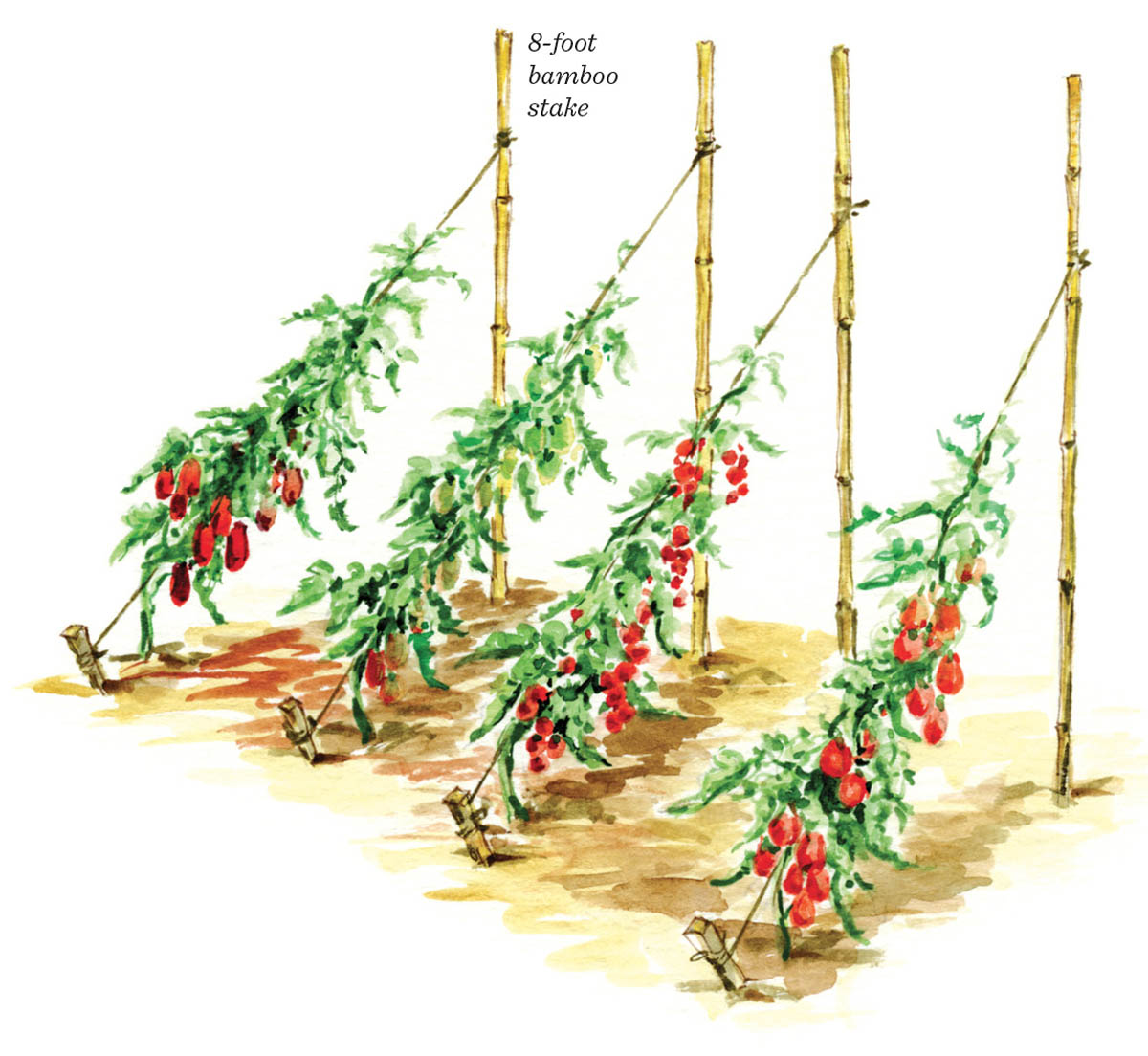
Doug Oster learned from his Italian grandmother-in-law that fresh, flavorful food is central to Italian culture, and to celebrate this fact he created his “Italian Heritage Garden.” Doug’s plot has nine planting beds separated by generous pathways. Each bed is filled with edibles —tomatoes, basil, garlic, and eggplants — that are central to Italian cuisine. He also shares a unique tomato-staking technique that he learned in Italy, which keeps the rampant growth of vining (indeterminate) tomatoes under control.
Doug Oster is a self-proclaimed Italian by marriage, yet his own lack of Italian heritage hasn’t stopped him from embracing Italian culture — particularly the food. A few years ago, Doug and his wife, Cindy, took a trip to Italy for their 25th wedding anniversary and visited the village where Cindy’s grandmother (Tracey) grew up. That trip turned out to be life-changing. “Visiting the country, we were reminded of the importance of fresh produce,” recalls Doug. “Food should be picked from the garden right before cooking or serving, just like Tracey used to do.”
A parade of Italian favorites. To capture the Mediterranean spirit of fresh, flavorful food, Doug has designed a gourmet Italian garden that provides the longest possible harvest of some of the finest-tasting vegetables and herbs. What would a respectable Italian garden be without a generous harvest of spring greens, versatile garlic, tender zucchini, cannellini beans, and heirloom tomatoes? By employing careful plant selection and succession planting, Doug keeps the harvest going from early spring to late autumn. Once the initial crops are harvested, he recommends replanting the emptied beds with warm-season vegetables such as cucumbers or zucchini, or quick-growing salad greens, beans, or broccoli raab.

Doug’s plan measures a generous 30 by 40 feet, but it can be reduced to fit sites with less space. Novice gardeners may wish to start gradually, beginning with a garden half this size and expanding as they gain confidence in their skills. Most vegetables grow best with ample sunlight, so look for an area that receives at least 6 to 8 hours of direct sun each day.
An old-fashioned tomato. Doug has included a wide range of plants essential to Italian cooking. Like all avid vegetable gardeners, Doug has favorite tomato varieties. He relies on these year after year, but he is also open to trialing any and all varieties and hybrids, with a focus on the diverse selection of heirloom tomatoes now available through seed companies. One of his top picks is a heritage variety called ‘Limbaugh Legacy Potato Top’, whose seeds were sent to him by the late Fred Limbaugh of Robinson, Pennsylvania — a reader of his newspaper column. The plants bear large 1- to 2-pound pink fruits that are exceptionally sweet and fruity. “It has an old-fashioned flavor that is unmatched,” notes Doug.
Tomatoes can be determinate or indeterminate in their growth. Determinate tomatoes are often called bush types, as they grow to a certain height — usually a compact 3 to 4 feet — and set all their fruits at about the same time, which is ideal for those who want to preserve the harvest. Indeterminate varieties, on the other hand, will continue to grow and bear fruit until the plants are killed by frost. Sometimes called vining types, they can grow taller than 6 feet and require sturdy staking. Many of the heirloom varieties are indeterminate.
Italian tomato tents. To support his tomato plants, Doug often depends on cages, but he also uses a method he discovered while traveling in Italy. “They used 8-foot bamboo stakes pounded into the center of the bed,” he says. “Then, strings are run like a tent on either side of the stake so that four plants can climb up the strings.” This keeps the plants off the ground, discourages disease, increases air circulation around the plants, and makes harvesting easy. As the vines grow, Doug gently wraps the string around the stems.

Indeterminate tomatoes run up strings on Doug’s Italian tomato tent.
As an intensive gardener, Doug doesn’t like to waste garden space. Therefore, when yield declines or a crop has finished producing, he quickly replants the bed with fresh seeds or seedlings to ensure the longest possible harvest. Some of his favorite successive crops include the following:

1. Tomatoes and greens: ‘Sungold’, ‘Brandy Boy’, and ‘Limbaugh Legacy Potato Top’ tomatoes underplanted with arugula, leaf lettuce, and endive
2. Arugula and leaf lettuce: ‘Sylvetta’, ‘Astro’, ‘Wasabi’, and wild (rustic) arugula; ‘Simpson Elite’ and ‘Amish Deer Tongue’ leaf lettuce
3. Garlic: ‘Music’ and ‘German White’ (‘German Extra Hardy’) (fall planting)
4. Beets: ‘Chioggia’
5. Radishes: ‘Sparkler’, ‘French Breakfast’, and ‘Giant of Sicily’
6. Carrots: ‘Cosmic Purple,’ ‘Atomic Red’, ‘Red Cored Chantenay’ and ‘Scarlet Nantes’
7. Sweet peppers: ‘Ace’, ‘Friariello di Napoli’, and ‘Corno di Toro’
8. Hot peppers: ‘Super Chili’, ‘Orange Habanero’, ‘Ghost Chile’ (‘Bhut Jolokia’), and ‘Long Red Cayenne’
9. Lettuce and endive: ‘Bronze Arrow’ and ‘Red Deer Tongue’ leaf lettuce; ‘Salad King’ endive
10. Zucchini: ‘Tondo di Toscana’
11. Assorted herbs: ‘Italian Large Leaf’, ‘Lettuce Leaf’, and ‘Genovese’ basil, rosemary, thyme, cilantro, fennel, and oregano
12. Garlic: ‘Chesnok Red’ and ‘Georgian Fire’ (fall planting)
13. Italian dandelions